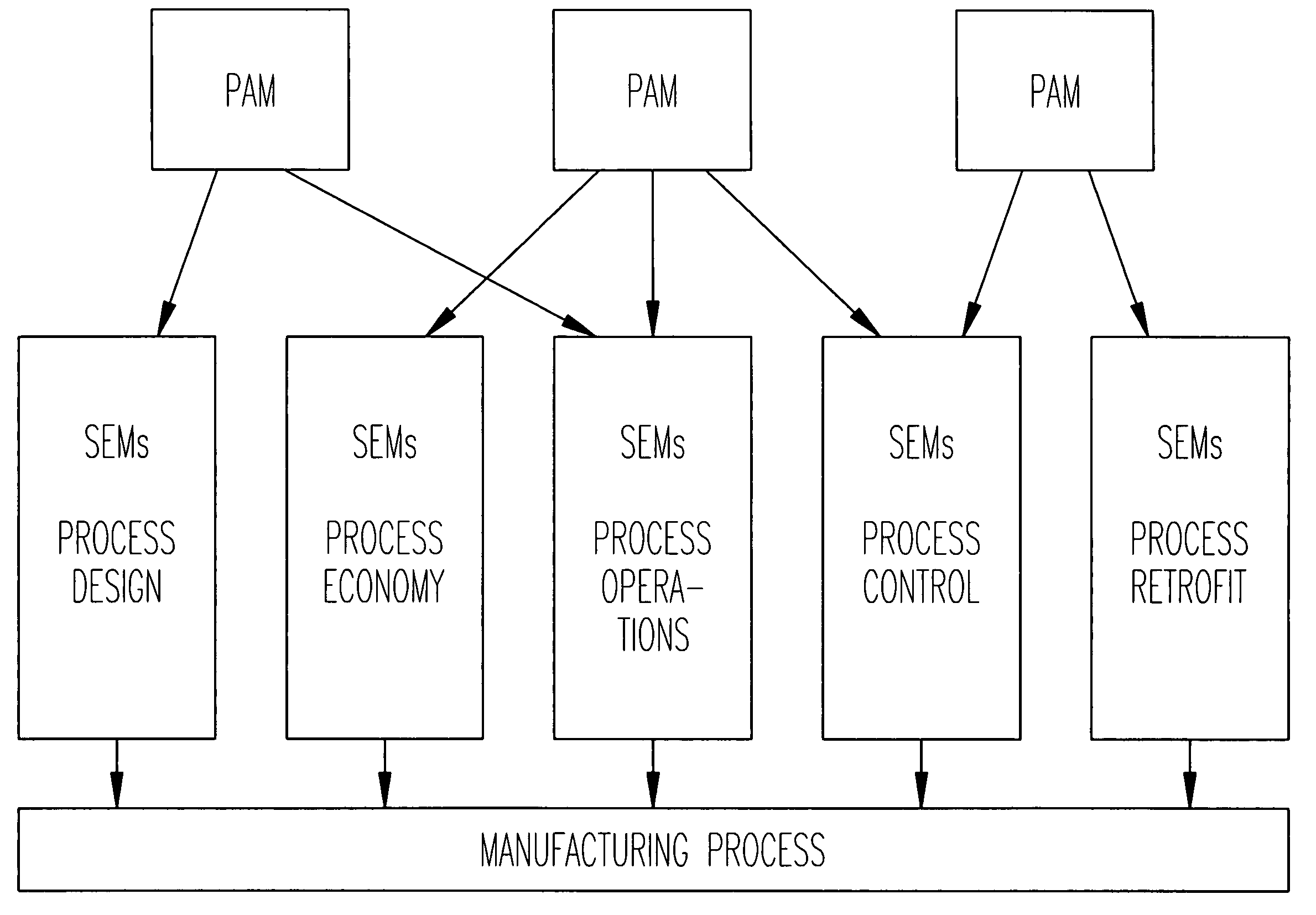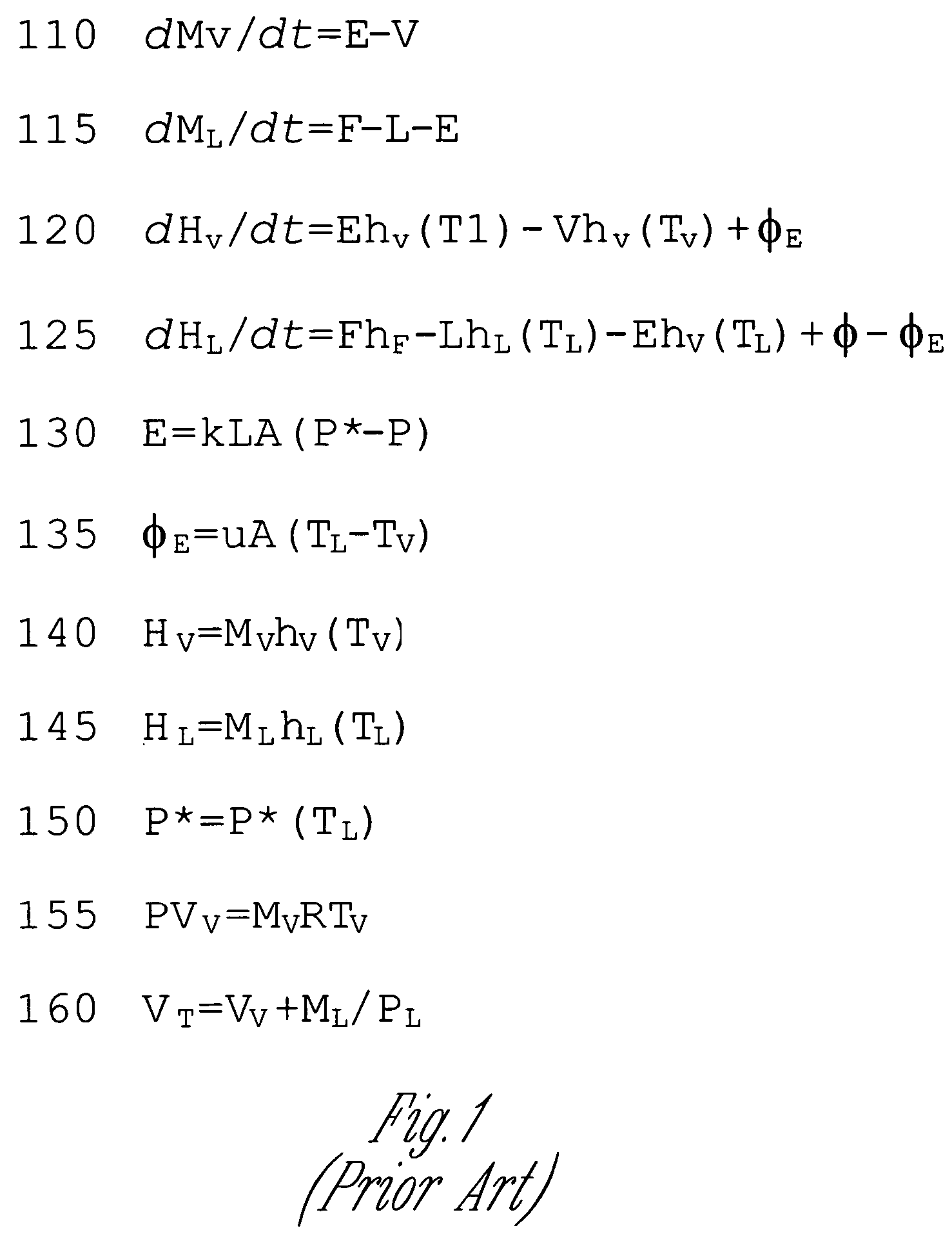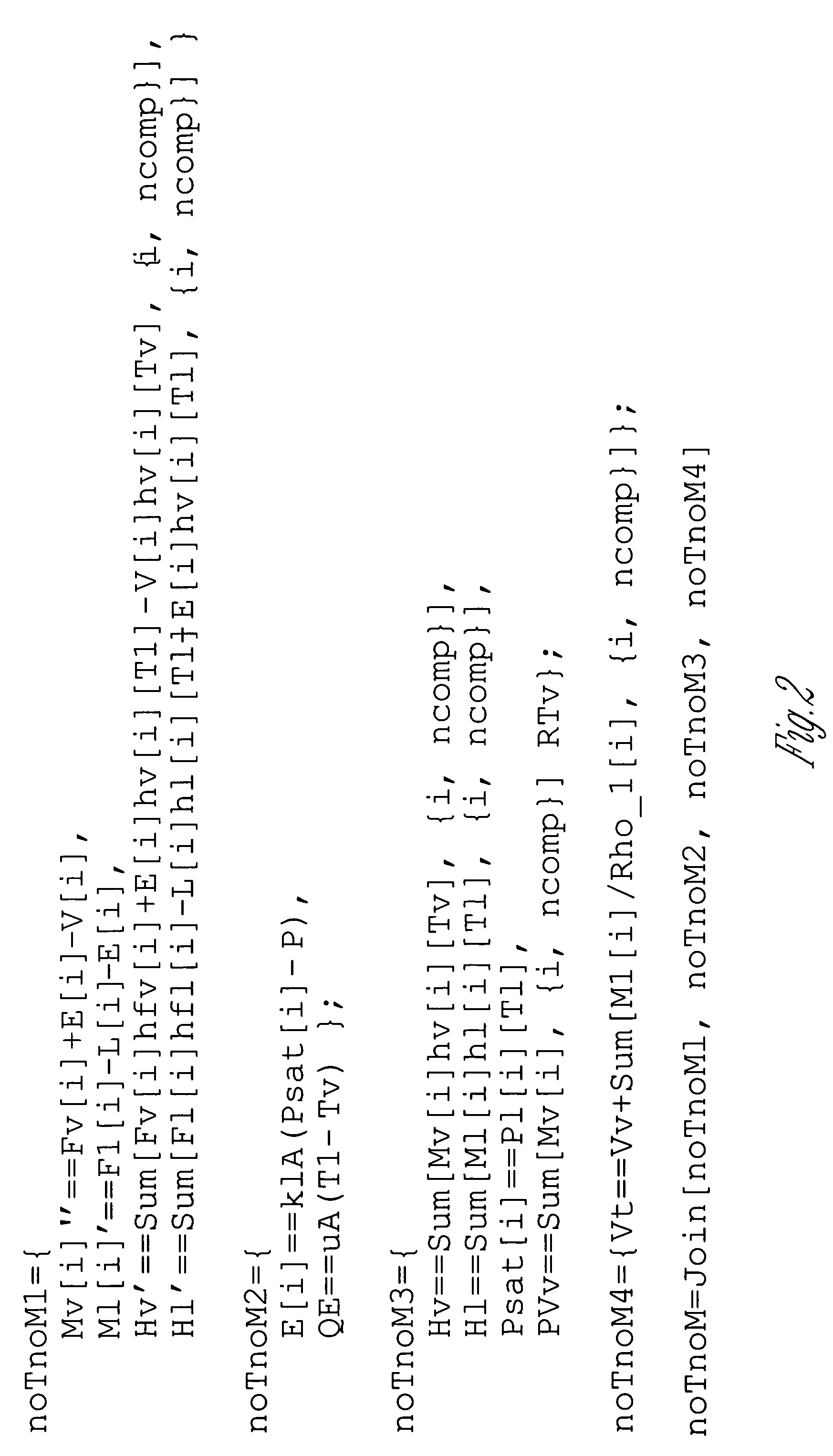Integrated modeling through symbolic manipulation
a symbolic manipulation and modeling technology, applied in the field of process modeling, can solve the problems of inhibiting the efficient use of model-based process applications, affecting the efficiency of process applications, so as to facilitate better inter-application consistency
- Summary
- Abstract
- Description
- Claims
- Application Information
AI Technical Summary
Benefits of technology
Problems solved by technology
Method used
Image
Examples
Embodiment Construction
[0017]In the following detailed description of the present invention, reference is made to the accompanying Drawings, which form a part hereof, and in which are shown by way of illustration specific embodiments in which the present invention may be practiced. It should be understood that other embodiments may be utilized and structural changes may be made without departing from the scope of the present invention.
[0018]Proper ancestor models (“PAMs”) contain environment independent symbolic descriptions of various components of a manufacturing process. For example, in an embodiment useful to the chemical industry, multiple PAMs comprising a PAM library contain process models representing distillation columns, reactors, condensers, and heat exchangers of various designs, referred to as components. PAMs are generic in nature, and not influenced by environmental conditions. A specific environment model (SEM) representing a particular component is derived from a PAM by introducing additi...
PUM
 Login to View More
Login to View More Abstract
Description
Claims
Application Information
 Login to View More
Login to View More - R&D
- Intellectual Property
- Life Sciences
- Materials
- Tech Scout
- Unparalleled Data Quality
- Higher Quality Content
- 60% Fewer Hallucinations
Browse by: Latest US Patents, China's latest patents, Technical Efficacy Thesaurus, Application Domain, Technology Topic, Popular Technical Reports.
© 2025 PatSnap. All rights reserved.Legal|Privacy policy|Modern Slavery Act Transparency Statement|Sitemap|About US| Contact US: help@patsnap.com



